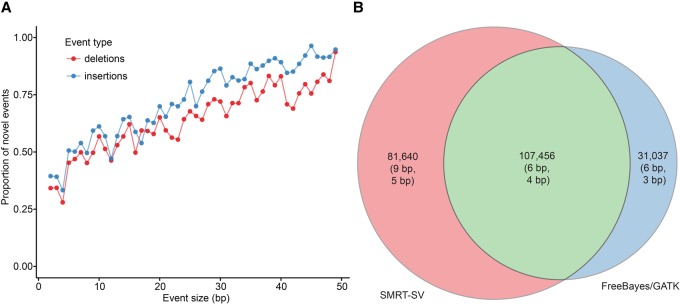Figure 2.
Indel discovery. Small indels (2–49 bp) identified by SMRT-SV in a theoretical diploid human (CHM1 and CHM13) from SMRT WGS data are compared with merged FreeBayes and GATK HaplotypeCaller indel calls from CHM1 and CHM13 Illumina WGS. All call sets were filtered to exclude previously defined low-complexity regions (Li 2014) and 1-bp indels that cannot be reliably detected by SMRT sequence data (Gordon et al. 2016). (A) The proportion of SMRT-SV calls that are not observed in Illumina call sets increases linearly with indel size. (B) The total number of calls shared between or distinct to SMRT and Illumina WGS call sets (with mean and median call size in parentheses) highlights that 43% of SMRT-SV indels were not detected by FreeBayes or GATK, while 22% of indels in Illumina-based call sets were not detected by SMRT-SV.

